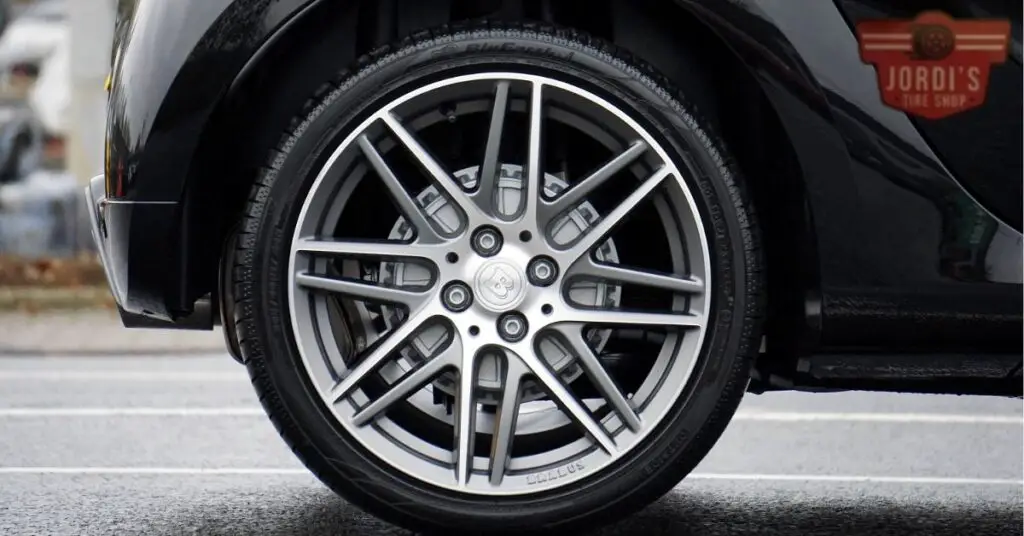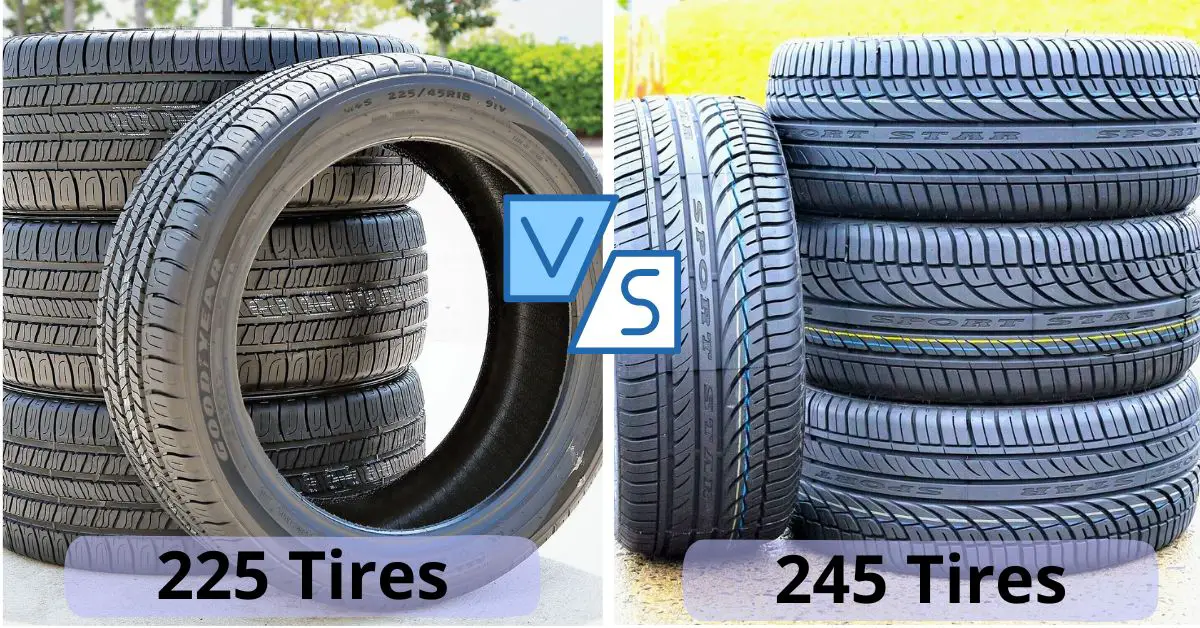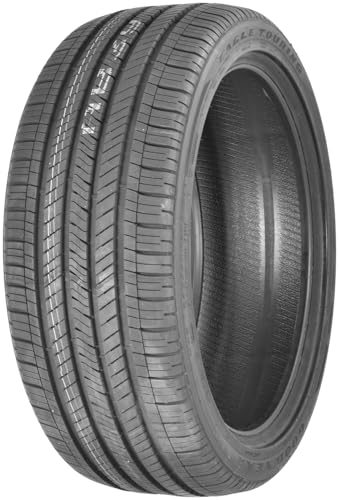Choosing the right tire size can make a world of difference in your driving experience. If you’re torn between 225 and 245 tires, you’re not alone. These numbers might seem small, but they impact everything from your vehicle’s handling to fuel efficiency.
In this article, you’ll discover the key differences between 225 and 245 tires. We’ll break down how each size affects performance, grip, and overall driving comfort, helping you make an informed decision tailored to your needs. Whether you’re looking for better traction or improved mileage, understanding these differences is crucial.
Understanding Tire Size Notation

Tire size affects many driving aspects, including performance and comfort. Understanding tire size notation helps you make an informed decision when comparing 225 and 245 tires.
What Do Tire Numbers Mean?
Tire numbers, such as 225/45R17, include three key components:
- Width: The first number is the tire’s width in millimeters. For example, 225 means the tire is 225 millimeters wide.
- Aspect Ratio: The second number is the aspect ratio, representing the height of the tire’s sidewall as a percentage of the tire’s width. A 45 means the sidewall height is 45% of the tire’s width.
- Diameter: The “R” stands for radial construction, and the following number indicates the diameter of the wheel in inches. In 225/45R17, the wheel diameter is 17 inches.
How Tire Size Affects Vehicle Performance
Tire size directly influences vehicle performance in several ways:
- Handling: Wider tires, like 245 mm options, offer better grip and stability compared to narrower ones like 225 mm. More contact with the road can improve cornering and handling.
- Fuel Efficiency: Narrower tires usually have lower rolling resistance. A 225 tire might provide better fuel efficiency than a 245 tire under similar conditions.
- Comfort: Aspect ratio impacts ride comfort. Tires with higher aspect ratios (e.g., 235/55R18) offer more cushion than lower ones (e.g., 245/45R18), absorbing road imperfections better.
- Traction: A larger contact area given by wider tires enhances traction on dry surfaces but may hinder performance in wet or snowy conditions without proper tread design.
Understanding tire size notation aids in selecting the best tire for your vehicle and driving needs.
Comparison of 225 and 245 Tires

Comparing 225 and 245 tires helps you understand their impact on driving experience, handling, and ride quality.
Physical Differences
225 and 245 tires differ mainly in width. A 225 tire is 225 mm wide, while a 245 tire is 245 mm wide. This 20 mm difference affects contact patch size and tire profile. Wider 245 tires offer a broader contact patch, enhancing traction and stability. However, this can lead to increased road resistance and potentially lower fuel efficiency compared to 225 tires. Additionally, wider tires tend to be heavier, which may slightly affect acceleration and braking.
Handling and Ride Quality
Handling and ride quality vary between 225 and 245 tires. Wider 245 tires generally provide better grip and cornering ability, benefiting performance-oriented driving. They are advantageous on dry surfaces, offering superior stability. However, in wet or snowy conditions, the tread design of 245 tires plays a crucial role in maintaining traction. Conversely, 225 tires ensure a smoother ride due to a higher aspect ratio, better absorbing road imperfections. This can translate to a more comfortable driving experience, especially on uneven terrains.
Suitability for Different Vehicle Types

Vehicle type determines tire size suitability. Understanding differences helps select the best option.
Best Fits for 225 Tires
225 tires suit compact cars, sedans, and some mid-sized SUVs. These tires offer better fuel efficiency due to lower rolling resistance. Compact cars (e.g., Honda Civic, Toyota Corolla) benefit from lower tire weights, improving acceleration and braking. Sedans with 225 tires enjoy a smoother ride on uneven surfaces, providing added comfort. Mid-sized SUVs (e.g., Subaru Outback) gain stability and adequate grip without compromising fuel economy.
Best Fits for 245 Tires
245 tires fit larger sedans, sports cars, and full-sized SUVs. These tires enhance performance, offering more traction and stability. Larger sedans (e.g., BMW 5 Series) benefit from improved cornering and handling. Sports cars (e.g., Ford Mustang, Chevrolet Camaro) leverage wider contact patches for superior grip, vital for high-speed maneuvers. Full-sized SUVs (e.g., Ford Explorer) gain better load-bearing capacity and improved off-road performance.
Pros and Cons of Each Tire Size

225 Tires
Advantages
225 tires offer several benefits. They provide better fuel efficiency, making them ideal for daily commuting. The narrower width reduces rolling resistance, which helps save on fuel consumption. Additionally, 225 tires often result in a more comfortable ride, as the slimmer profile better absorbs road imperfections.
- Fuel Efficiency: Lower rolling resistance reduces fuel consumption.
- Comfort: Narrower width absorbs road bumps better.
- Cost: Generally cheaper than wider tires.
Disadvantages
However, 225 tires do have some drawbacks. The narrower contact patch can lead to reduced grip and stability, especially when cornering. This may compromise handling performance for more spirited driving or harsh weather conditions.
245 Tires
Advantages
245 tires enhance vehicle performance. The wider contact patch improves traction and stability, crucial for sports cars and larger vehicles. Additionally, they support higher load-bearing capacity, making them suitable for SUVs and trucks.
- Traction: Larger contact patch offers better grip.
- Stability: Enhanced stability at higher speeds.
- Load Bearing: Higher capacity for heavier vehicles.
Disadvantages
Despite their advantages, 245 tires are not without issues. They typically result in lower fuel efficiency due to increased rolling resistance. Furthermore, the ride may be less comfortable, as the wider tires do not absorb road imperfections as effectively. Lastly, they are generally more expensive than 225 tires, which could impact your budget.
Conclusion
Choosing between 225 and 245 tires ultimately depends on your driving needs and vehicle type. If you prioritize fuel efficiency and a comfortable ride, 225 tires are a great fit, especially for compact cars and sedans. They offer a balanced blend of performance and economy. However, if you’re looking for enhanced traction, stability, and load-bearing capacity, 245 tires are the way to go. These tires are ideal for sports cars and larger vehicles, providing improved performance and safety. Consider your driving habits and vehicle requirements to make the best choice for your tires.
Related Posts:
- 225 vs 245 Tires: Which Size is Best for Your Vehicle’s Performance and Comfort?
- 235 vs 245 Tires: A Comprehensive Guide to Choosing the Right Size for Your Vehicle
- 275 vs 285 Tires: Performance, Fuel Efficiency, and Cost Comparison Explained
- 225 vs 235 Tires: Which Offers Better Performance and Fuel Efficiency?






